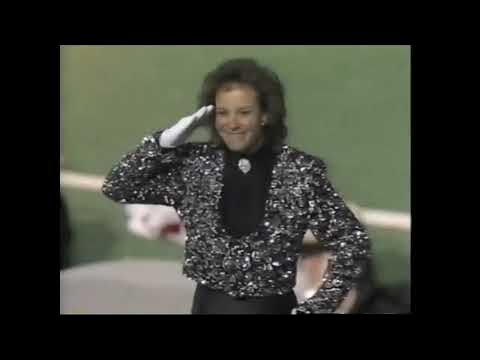There was a time when some corps had a song which they would pull out of their hat to finish their shows with. For the 27th Lancers, it was Danny Boy. For the Santa Clara Vanguard, it was Fiddler on the Roof’s Bottle Dance. With the Racine Kilties, their show stopping closer was Auld Lang Syne, a song which the corps used over 30 times throughout it’s history as both a junior and all-age corps. With Syne’s ties to Scotland, it was fitting that the Kilties, who exuded Scot culture in a distinctly American activity, would end many of their shows with this song.

Auld Lang Syne comes from a Scottish ballad, “Old Long Syne”, printed in 1711 by James Watson, and later collected and submitted to the Scots Musical Museum by poet Robert Burns in 1788. In 1799, the poem was then set to a traditional tune which is now the standard melody we know (Auld Lang Syne. (2005). In Wikipedia. Retrieved December 26, 2023, from https://en.wikipedia.org/wiki/Auld_Lang_Syne). I’m a little disappointed that nobody has added anything regarding the Kilities and their use of Auld Lang Syne throughout their history to the Wikipedia article I cited. Looks like I’ll have to sign up for an account and make some necessary edits.

Per Drum Corps Museum, the Kilties first performed Auld Lang Syne in 1960, appropriately as their closer. The corps would end their shows with Syne 18 times during their junior corps existence, which came to an end in 1982. When the corps returned to the field a decade later as an alumni corps, Auld Lang Syne did so as well. That alumni appearance in Madison served as a springboard to return the Kilties to the field as a competitive corps, this time in the all-age DCA world. Ironically, after another 11 shows closing with Auld Lang Syne, the Kilties would achieve their best DCA placement, 9th, in 2011, playing Syne as their opener, the only time the corps would perform the song anywhere in their show besides the finale.

The arrangement was almost always the same, starting slow and reverent, sometimes playing backfield. After building in volume at the end of the melody, a percussion break would allow the corps to form up for re-entry, as a soprano duet would play a traditional Scottish fanfare. The full corps would then push forward at full volume and tempo, reprising the melody. A quartet of soprano soloists would then outdo each other on the musical scale before a final thunderous chord finished the song and the show. With the field judges no longer marking ticks during this final portion of the show, it was all about entertainment and effect, and the Kilties made the most of it every time Auld Lang Syne rang out from their instruments.
Discover more from Medi-Nerd 2
Subscribe to get the latest posts sent to your email.



Thank you for this article on “Syne” and the Kilties! 1968 was the first year that the Kilties used Ken Norman’s arrangement of “Syne.” (Ken marched with the Kilties 1962-66.) This is the arrangement that most Kiltie fans know, because no other version ever replaced it – it was that good and that iconic. In my opinion, the 1968 recording on YouTube is the best recording I’ve heard of the piece – flawless sopranos at the end! (1968 was also the year that Ken’s arrangement of “MacArthur’s Park” debuted.) It was a joy to watch the corps in those days, too, and Scottie Poulson was an amazing drum major – twirling around and around as the corps headed into the end zone to finish the show. To this day, I get a bit choked up whenever I hear Ken’s arrangement of “Syne.”